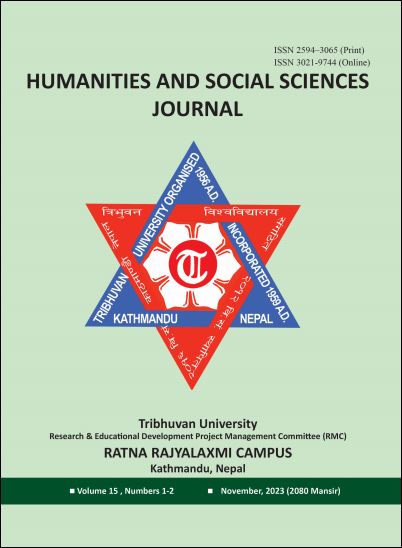Impact of Climate Change on Livelihood of Poor and Marginalized Communities in Sudur Pashchim Nepal
DOI:
https://doi.org/10.3126/hssj.v15i1-2.63774Keywords:
sustainable development, climate change, cropping pattern, poor peopleAbstract
The present world has brought out considerable attention on the issues of climate change and more so in the regions like Nepal where impacts are being directly and indirectly faced by people living below the poverty line. This study has been carried in Kailali and Doti districts of Sudur Pashchim Province of Nepal to explore the impact of climate change on livelihood of poor and marginalized communities using mixed-method approach which combined quantitative and qualitative methods of research. Based on household survey, focus group discussion, interaction with the key informants and local authorities, poor and marginalized communities in both Doti and Kailali districts noticed that climate is changing, although slowly, and that people have been experiencing several impacts of climate change. The result indicated that out of total respondents 45.1 percent has been reported declining yields of major crops, 25.3 percent has been shared in changes in cropping pattern, 58.5 percent has been informed the increased in pest and disease infestation, 69.8 percent has been reported decreased in availability of water in nearby streams and rivers in recent years in all study sites compared to the past situation. Similarly, 53.1 percent has been shared the deceasing on movement of wild habitats, 73.5 percent has been informed in loss of dependent wild species and 46.4 percent of respondents has been expressed the decreasing of crown density in forests and grasslands coverage. This study helps policymakers and other stack holders to develop suitable policies and effective adaptation strategies to enhance the livelihoods within this context of local marginalized communities’ context.




